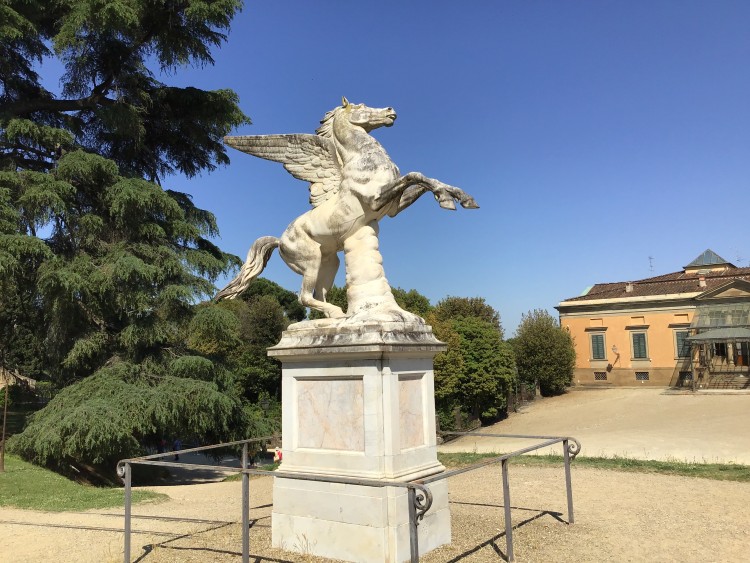 DIDA
Browse
How it works
Insert your collection
News
Contacts us
DIDA
Browse
How it works
Insert your collection
News
Contacts us
Author: Aristodemo Costoli
Type: statua
Room: Palazzina meridiana

Description
Pegasus is a figure from Greek mythology. He is the most famous of the winged horses. According to myth, he was born from the ground wet with blood spilled when Perseus cut Medusa's neck. A wild and free animal, Pegasus is initially used by Zeus to carry the thunderbolts to Olympus. Thanks to the reins he received as a gift from Athena, he is later tamed by Bellerophon, who uses him as a mount to kill the Chimera. When his exploits are over, Pegasus takes flight to the highest part of the sky and transforms into a cloud of shimmering stars that formed a constellation, still called Pegasus. The Boboli Pegasus was made by Aristodemo Costoli between 1827 and 1851, and was originally intended for the Cascine Park. There is no definite information on the completion of the work on the winged horse, but from a letter from the president of the Academy of Fine Arts, dated 1851, we know that the sculpture of Pegasus exceeded expectations so it seemed convenient to give it a more appropriate arrangement than the original Cascine Park. The sculpture placed in the Prato della Meridiana in the Boboli Gardens. It would be necessary to wait until 1854 for the construction of the base for the sculpture to be approved. In the week of October 16-21, the statue of Juno that was in front of the Piazzale della Meridiana was removed to make way for the statue of Pegasus, and it was transported with its base to the Amphitheater. In the twentieth century, the Pegasus was repeatedly used as a mobile stage machine for the stage directions of the Maggio Musicale Fiorentino, which at that time took place inside the Boboli Gardens, between the Meridiana lawn and the Amphitheater. The horse and its base rested on an iron cart, which ran on tracks that still exist. However, the improper and prolonged use of the sculpture caused the horse major static problems, to which they sought to put
Photo and Text Credits: catalogo.beniculturali.it
More artworks in Palazzina meridiana
If you are not at the museum click on the link below and you can test our guide by framing some works directly on the DEMO page.

If you are near the museum you can reach it and by framing with your mobile you can discover the audio guide.
